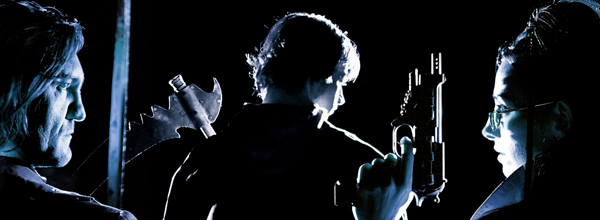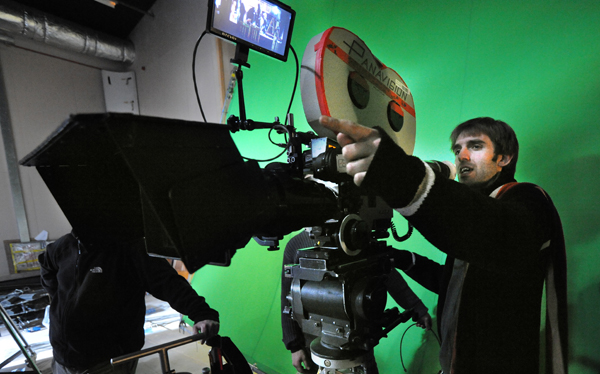The Super-8 footage came back from the lab. Unfortunately a lot of it is out of focus. We carefully measured all our focal distances with a tape measure, so I can only conclude that one of the lens elements in the camera was loose or out of alignment. So I was glad I took the precaution of shooting everything on HDV too.
It didn’t take me long to edit the material, and the composer is now working on the music. Virgin Media Shorts limits entries to 140 seconds in length. I thought The Picnic would run to 90 seconds, but the assembly came in at 170. With a lot of trimming I shaved 12 seconds out, then I cheated. Since I was treating the HDV material to look like old film, I figured I could get away with speeding the whole movie up slightly, which would enhance that look and get it down to the target length.
Colin has plenty more Super-8 cameras in his arsenal, and hopefully for the next project we’ll have time to test one beforehand.
Five things I like about Super-8, the format:
1. It’s film, so even though you may have bought the camera for a fiver at a car boot sale, it will give you more beautiful images than the most advanced digital rig Lucas or Cameron can come up with.
2. It forces you to be disciplined on set because the cartridges are so short.
3. The anticipation of your footage coming back from the lab is simultaneously nerve-wracking and delicious.
4. Does your video camera have a trigger? No, it has a boring REC STOP/START button.
5. You can shoot real slow motion.
Five things I like about Super-8, the J. J. Abrahms movie (no spoilers):
1. The guy from Early Edition is in it. Remember Early Edition? That show rocked.
2. It’s not in 3D.
3. It has an evil military guy in it. All the best movies have evil military guys in them – Short Circuit, Flight of the Navigator, DARYL, ET… And the kids are like the Goonies. The only thing missing is the Truffle Shuffle.
4. Like Abrahms’ previous offering, Star Trek, it perfectly balances action, emotion and humour. There’s something here for everyone.
5. It’s not a sequel, prelude, remake or reimagining. It’s not based on a video game, a book, a comic, a Broadway show or a theme park ride. It’s (gasp!) original.

